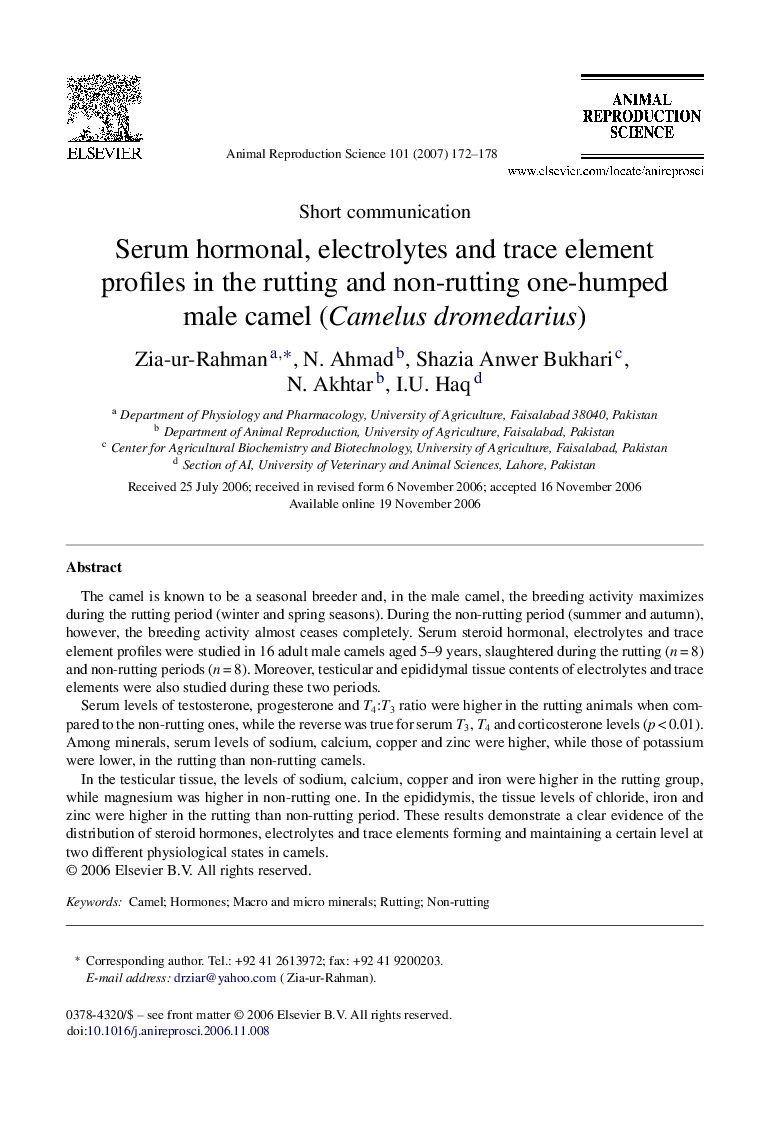| Article ID | Journal | Published Year | Pages | File Type |
|---|---|---|---|---|
| 2074548 | Animal Reproduction Science | 2007 | 7 Pages |
The camel is known to be a seasonal breeder and, in the male camel, the breeding activity maximizes during the rutting period (winter and spring seasons). During the non-rutting period (summer and autumn), however, the breeding activity almost ceases completely. Serum steroid hormonal, electrolytes and trace element profiles were studied in 16 adult male camels aged 5–9 years, slaughtered during the rutting (n = 8) and non-rutting periods (n = 8). Moreover, testicular and epididymal tissue contents of electrolytes and trace elements were also studied during these two periods.Serum levels of testosterone, progesterone and T4:T3 ratio were higher in the rutting animals when compared to the non-rutting ones, while the reverse was true for serum T3, T4 and corticosterone levels (p < 0.01). Among minerals, serum levels of sodium, calcium, copper and zinc were higher, while those of potassium were lower, in the rutting than non-rutting camels.In the testicular tissue, the levels of sodium, calcium, copper and iron were higher in the rutting group, while magnesium was higher in non-rutting one. In the epididymis, the tissue levels of chloride, iron and zinc were higher in the rutting than non-rutting period. These results demonstrate a clear evidence of the distribution of steroid hormones, electrolytes and trace elements forming and maintaining a certain level at two different physiological states in camels.
